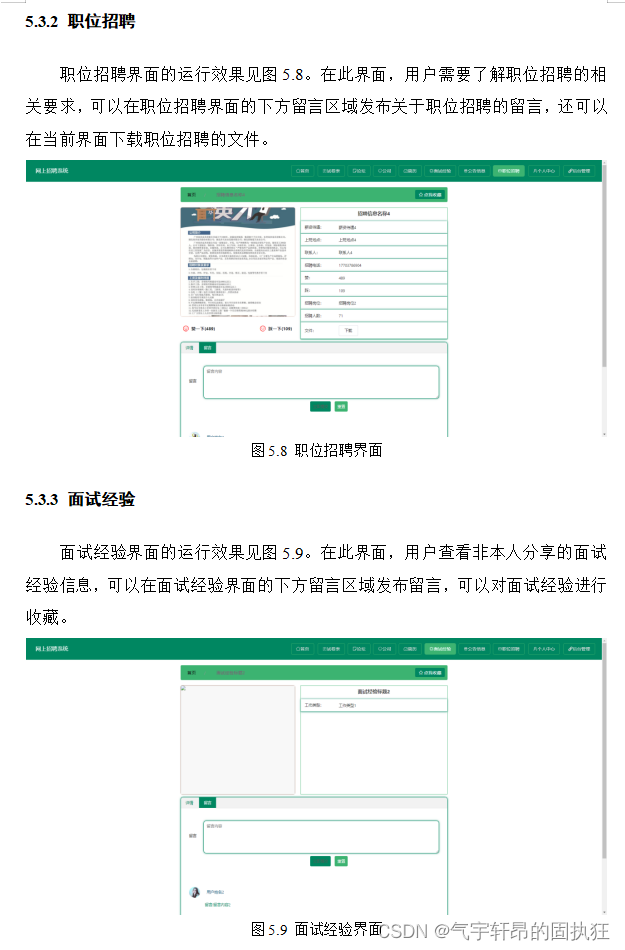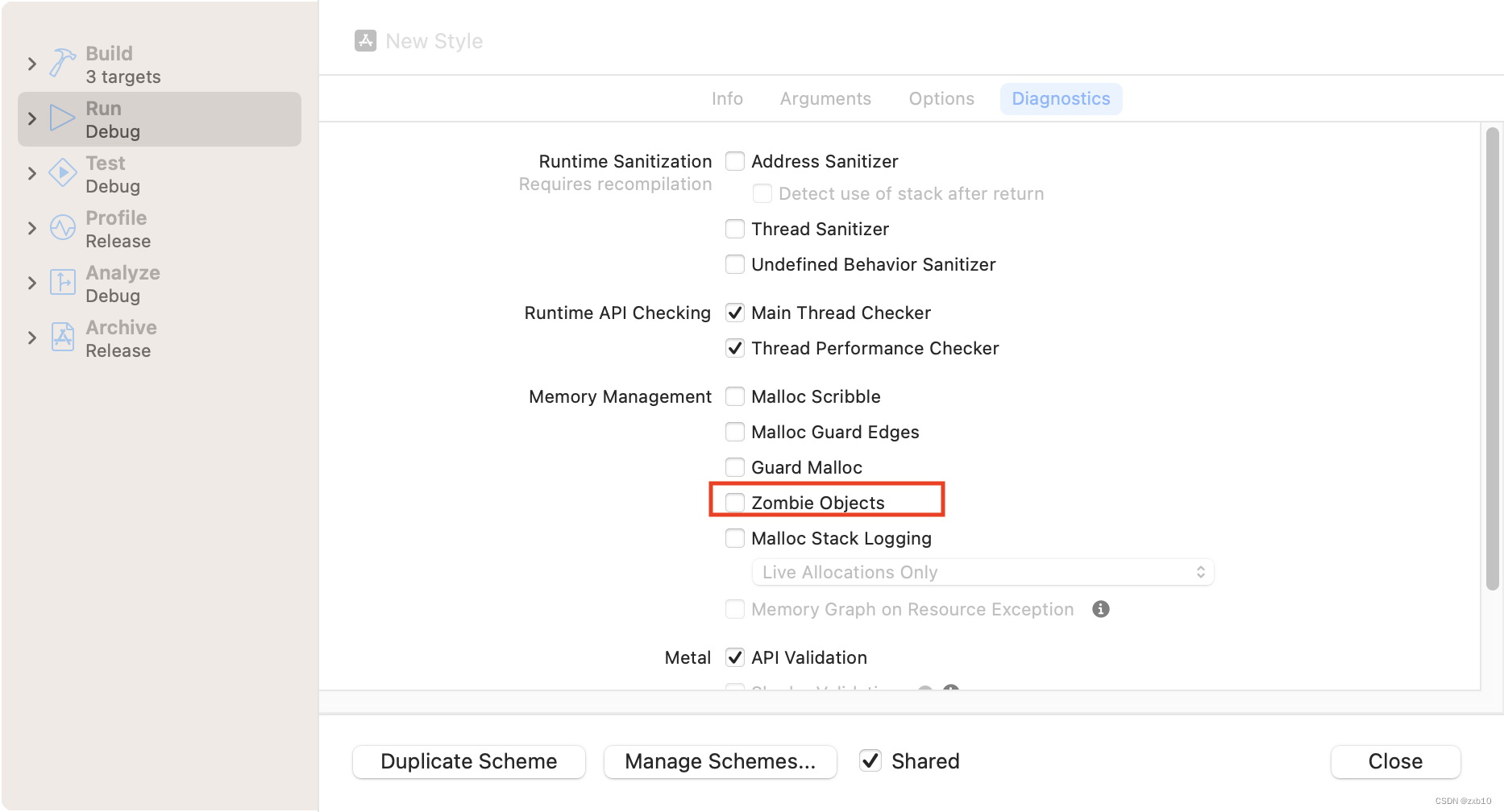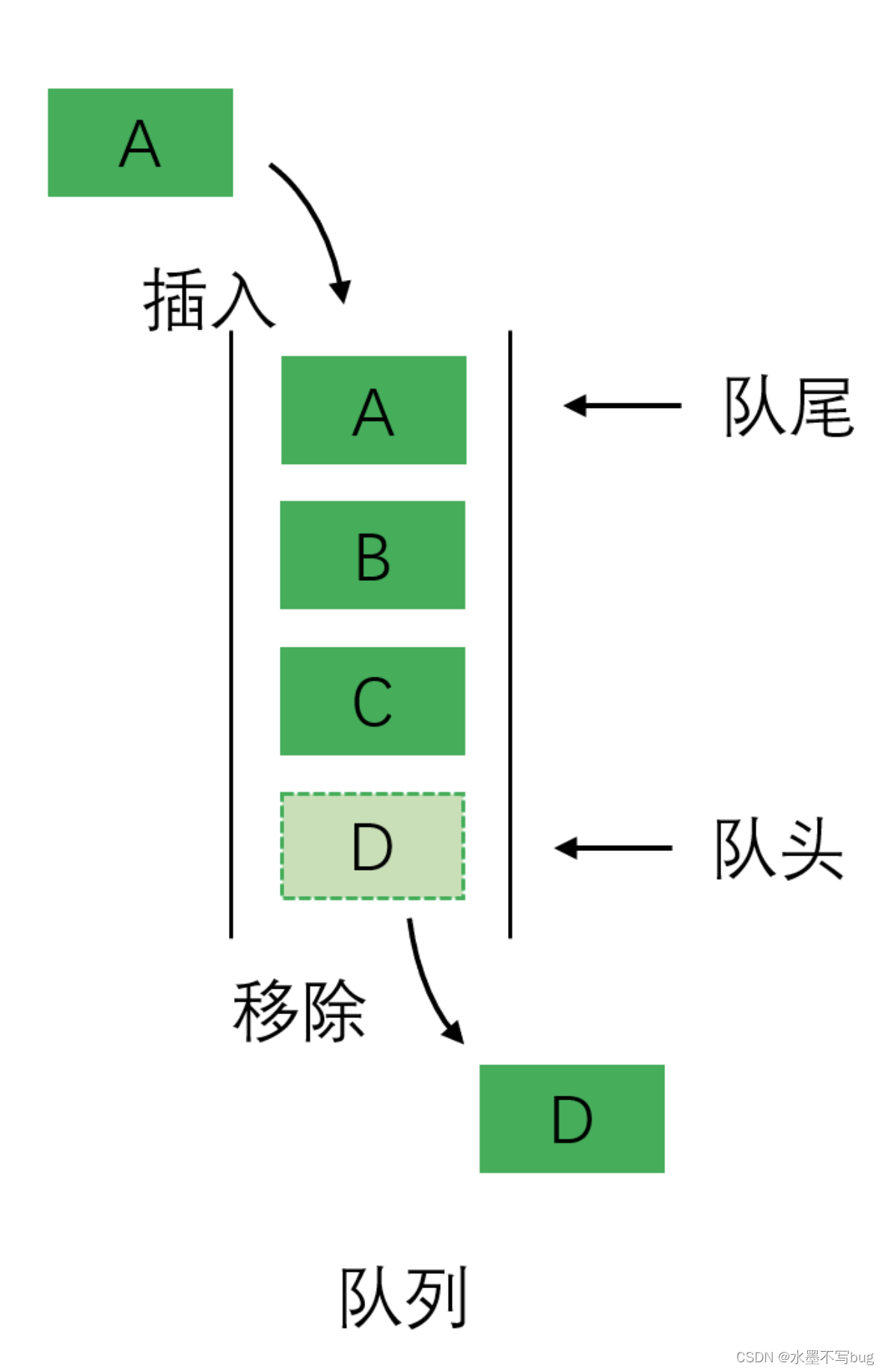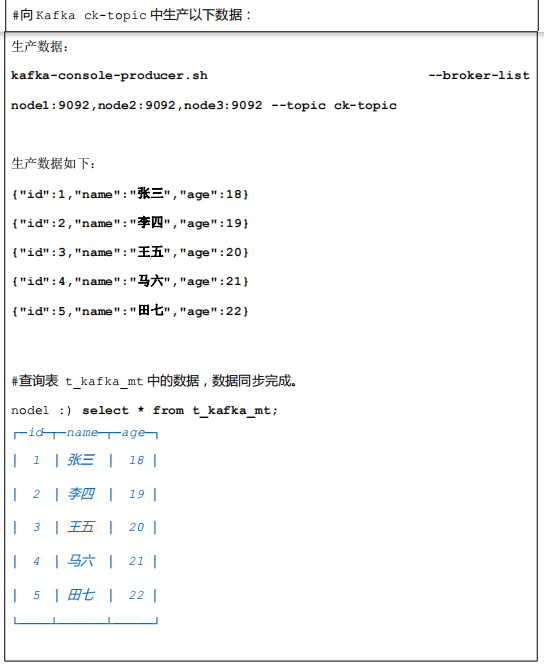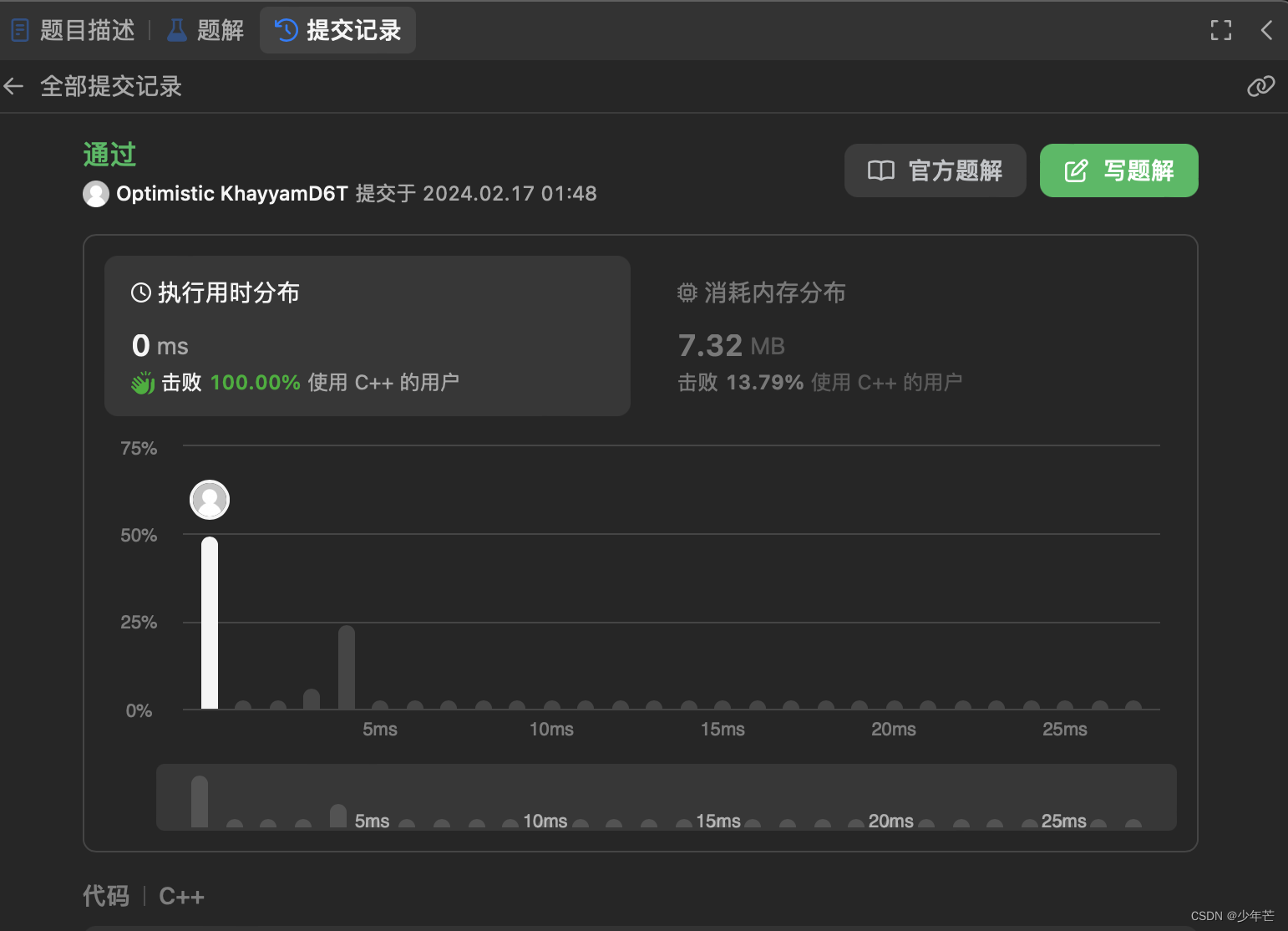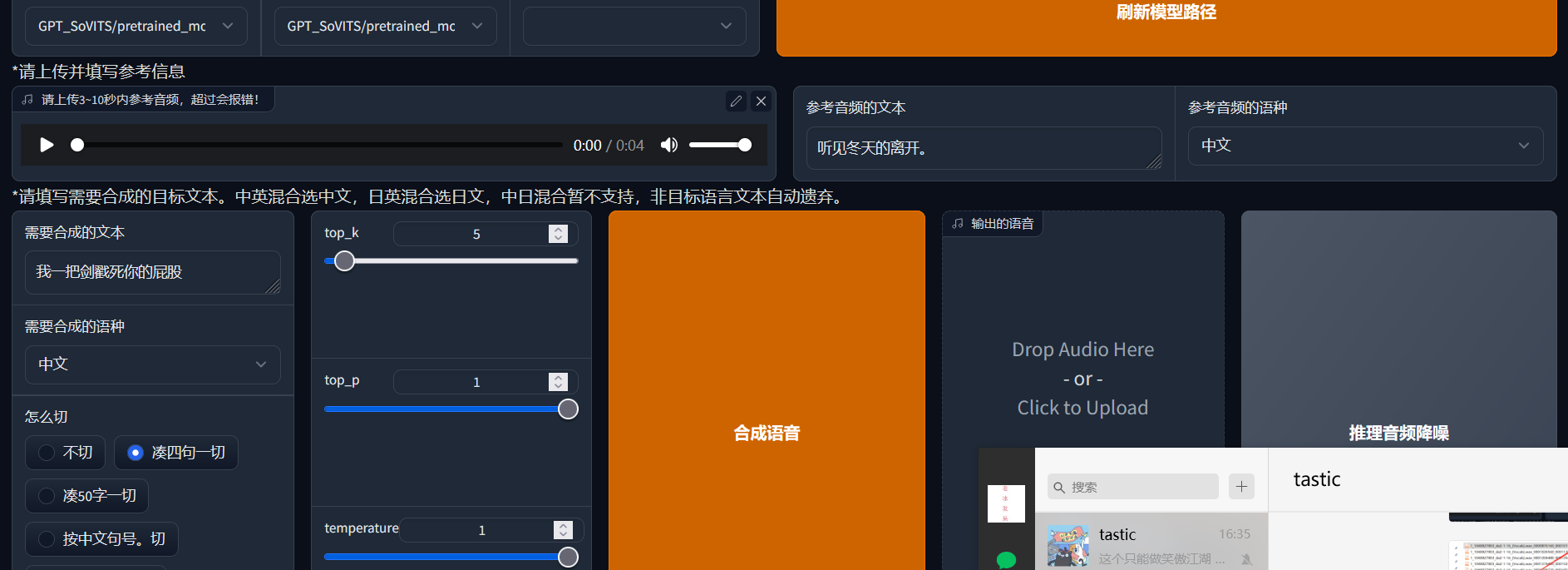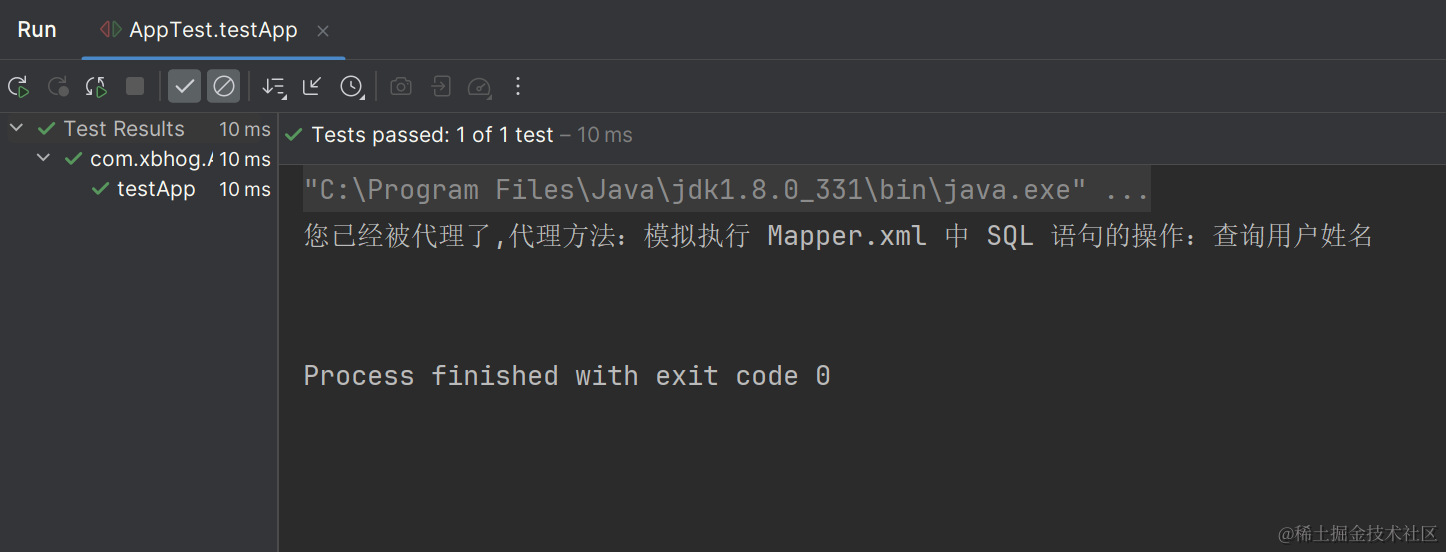最近公共祖先
第一版(前提:p和q默认存在于这棵树中)
可以层序遍历每个节点时用个HashMap存储该结点和其直接父节点的信息。然后从p开始溯源,将所有的父节点都添加到一个HashSet集合里。然后从q开始溯源,每溯源一步看是否在set集合中,在的话就返回。
public TreeNode lowestCommonAncestor(TreeNode root, TreeNode p, TreeNode q) {
HashMap<TreeNode, TreeNode> fatherMap = new HashMap<>();//充当父指针的作用,第一个Node的父亲是第二个Node
fatherMap.put(root,root);
getFather(root, fatherMap);
HashSet<TreeNode> set1 = new HashSet<>();//存放从p开始向上溯源的一系列父节点(包括p自己)
TreeNode cur = p;
while(fatherMap.get(cur)!=cur){//没有溯源到root节点
set1.add(cur);
cur = fatherMap.get(cur);
}
set1.add(root);//最后的root节点也要加上
cur = q;
while(!set1.contains(cur)) cur = fatherMap.get(cur);//从q开始向上溯源,每溯源一步,就检查是否在set1中
//最后得到的cur就是最近公共祖先
return cur;
}
//帮每个节点找父节点的过程
public void getFather(TreeNode root,HashMap<TreeNode, TreeNode> fatherMap){
if(root==null) return;
fatherMap.put(root.left, root);
fatherMap.put(root.right, root);
getFather(root.left, fatherMap);
getFather(root.right, fatherMap);
}
可以看到效率很低,12ms,击败7.89%使用 Java 的用户。
第二版(前提:p和q默认存在于这棵树中)
我们可以分析p和q的最近公共祖先的情况,其实总共就两种。
- p和q其中有一方是对方的最近公共祖先。最简单的情况如图2。
- p和q的最近公共祖先是第三个节点。最简单的情况如图1。
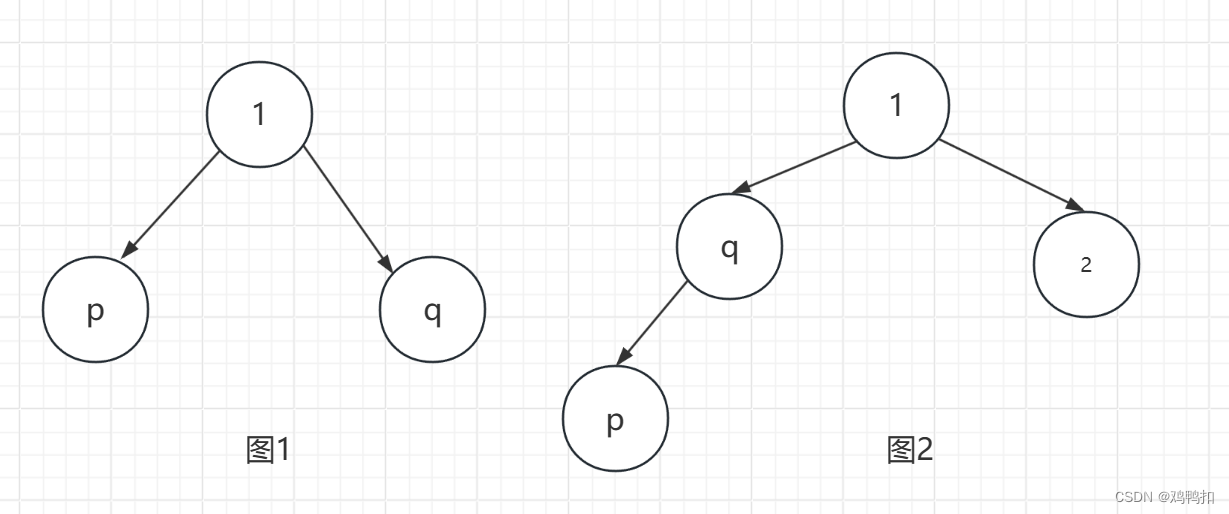
public TreeNode lowestCommonAncestor(TreeNode root, TreeNode p, TreeNode q) {
if(root==null||root==p||root==q) return root;//意味着返回的子树中如果有p或者q,那么才会返回p或者q
//如果没有p或者q,那么只会返回空
TreeNode left = lowestCommonAncestor(root.left, p, q);
TreeNode right = lowestCommonAncestor(root.right, p, q);
if(left!=null&&right!=null) return root;
//如果左节点和右节点都不为空,说明左子树有p或q其中之一。右子树有p或q其中之一。那么此时就应该返回它俩的父节点
return left!=null?left:right;
//如果左节点或右节点中有一个为空。那么返回不空的那一个。如果两个都为空,那么返回空节点。
}
这部分有点抽象,不好讲,可以去看b站左程云的视频p6:https://www.bilibili.com/video/BV13g41157hK
最终效率是6ms,击败65.96%使用 Java 的用户
相关题目
LeetCode LCR 164.二叉树的最近公共祖先
LeetCode LCR 193.二叉搜索树的最近公共祖先
LeetCode 236.二叉树的最近公共祖先
LeetCode 235.二叉搜索树的最近公共祖先
(这四道题都是一模一样的题面……)
LeetCode 1650.二叉树的最近公共祖先Ⅲ
LeetCode 1644. 二叉树的最近公共祖先 II
(以上题目的题解可以见本人另一篇博客)
LeetCode 1676. 二叉树的最近公共祖先 IV
寻找后继结点
二叉树的结构包含了父节点指针。头节点的父节点指针指向空。
现在只给某个存在于二叉树的节点node,返回node的节点。
且node和其后继结点之间的路径长度为k的话,时间复杂度为O(k)
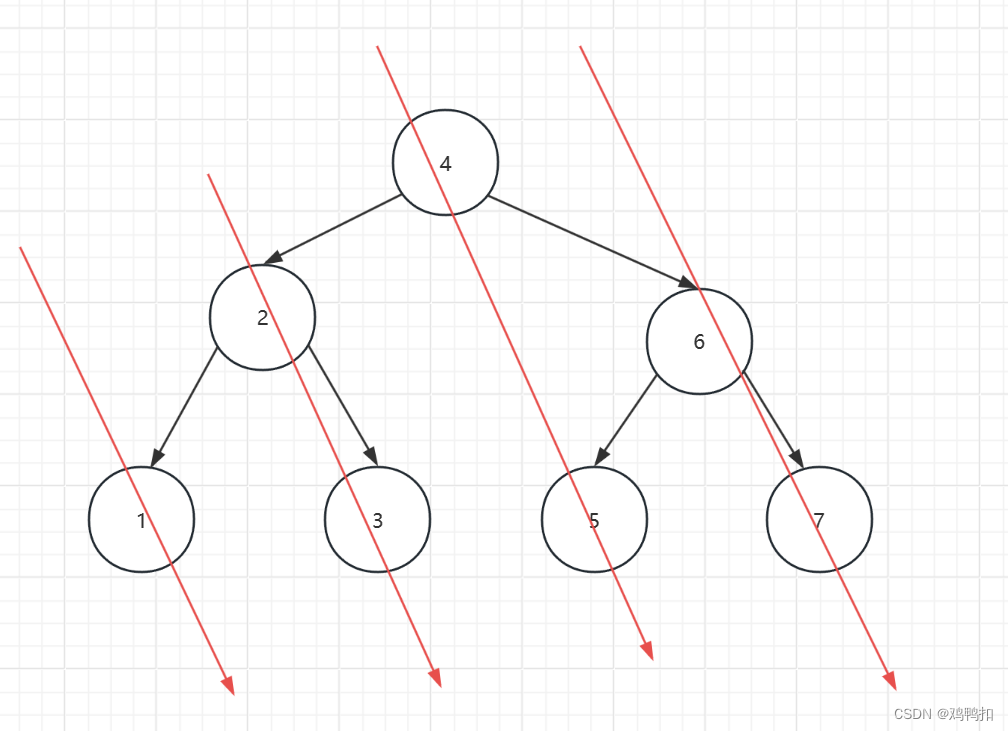
由图可知,一颗树的中序遍历的顺序是从左上到右下的。那么一个节点的中序后继节点只会分为两种情况。第一,其中序后继和节点本身在一条线上,如节点2和节点3,节点4和节点5。那么也就是说我们该从这个节点出发,找节点的右子树的最左节点。
第二,其中序后继和节点本身不在一条线上,如节点5和节点6.那么也就是说我们该从这个节点出发,找节点的父树的最右节点。
而且注意,因为中序遍历是从左上到右下,所以应该优先去找节点的右子树的最左节点。
综合一句话就是,找这个节点的右子树的最左节点或者父树的最右节点。
第一版(二叉树结构包含父节点指针的)
public Node inorderSuccessor(Node node){
if(node==null) return null;
if(node.right!=null){
Node cur = node.right;
while(cur.left!=null){
cur = cur.left;
}
return cur;
}else{
Node cur = node;
Node curFather = node.parent;
while(curFather!=null&&curFather.left!=cur){
cur = cur.parent;
curFather = cur.parent;
}
return curFather;
}
}
第二版(二叉树结构不包含父节点指针的)
class Solution {
public TreeNode inorderSuccessor(TreeNode root, TreeNode p) {
if(root==null) return null;
if(p.right!=null){//存在右子树
TreeNode cur = p.right;
while(cur.left!=null){
cur = cur.left;
}
return cur;
}else{//去找左父树
HashMap<TreeNode,TreeNode> fatherMap = new HashMap<>();
fatherMap.put(root, root);
findFather(root, fatherMap);
TreeNode cur = p;//6
TreeNode curFather = fatherMap.get(p);//5
while(curFather.left!=cur){
if(cur!=root){
cur = fatherMap.get(cur);//5
curFather = fatherMap.get(cur);
}else{
curFather=null;
break;
}
}
return curFather;
}
}
public void findFather(TreeNode root,HashMap<TreeNode,TreeNode> fatherMap){
if(root==null) return;
fatherMap.put(root.left, root);
fatherMap.put(root.right, root);
findFather(root.left, fatherMap);
findFather(root.right, fatherMap);
}
}
注意点
注意第一版代码和第二版代码的while循环不太一样。
//第一版的while循环
Node cur = node;
Node curFather = node.parent;
while(curFather!=null&&curFather.left!=cur){
cur = cur.parent;
curFather = cur.parent;
}
return curFather;
//第二版的while循环
TreeNode cur = p;
TreeNode curFather = fatherMap.get(p);
while(curFather.left!=cur){
if(cur!=root){
cur = fatherMap.get(cur);
curFather = fatherMap.get(cur);
}else{
curFather=null;
break;
}
}
return curFather;
因为第一版代码直接包含了父节点指针,所以如果对于如下情况,求6的后继结点,实际上是不存在。
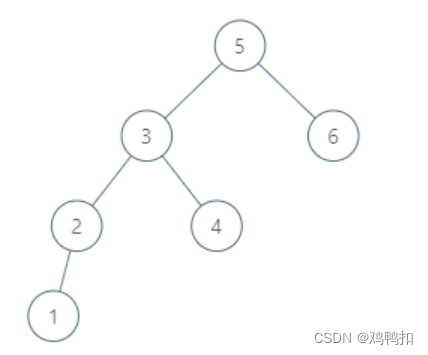
那么其curFather是可以直接遍历到5的父节点,空节点的
但是如果第二版代码也改成了
TreeNode cur = p;//6
TreeNode curFather = fatherMap.get(p);//5
while(curFather!=null&&curFather.left!=cur){
cur = fatherMap.get(cur);//5
curFather = fatherMap.get(cur);
}
return curFather;
因为HashMap中是无法存储空节点的,就会导致curFather是遍历不到5的父节点,也就是空节点,从而超出时间限制。
相关题目
LeetCode 面试题04.06 后继者
LeetCode 285.二叉搜索树中的中序后继
LeetCode LCR 053.二叉搜索树中的中序后继
(以上三题都是一模一样的题面,都是二叉树结构中没有父节点指针的)
LeetCode 510.二叉搜索树中的中序后继Ⅱ
(二叉树结构中有父节点指针的)
二叉树的序列化和反序列化
就是内存里的一颗树如何变成唯一的字符串形式,又如何从字符串形式变成树的过程。
这里的话以先序遍历来做序列化,遇到空节点就用“#”代替,每个节点之后都以“_”作为结尾。
注意因为保存了空节点的信息,所以只需要先序遍历本身就能确定树的唯一结构。
如果没有保存空节点的信息,那么就需要先序遍历+中序遍历才能确定树的唯一结构。
public class Codec {
public String serialize(TreeNode root) {
if(root==null) return "#_";
String res = root.val+"_";
res+=serialize(root.left);
res+=serialize(root.right);
return res;
}
// Decodes your encoded data to tree.
public TreeNode deserialize(String data) {
String[] values = data.split("_");
Queue<String> queue = new LinkedList<>();
int size = values.length;
for(int i=0;i<size;i++){
queue.add(values[i]);
}
return recodeByPreOrder(queue);
}
public TreeNode recodeByPreOrder(Queue<String> queue){
String value = queue.poll();
if(value.equals("#")) return null;
TreeNode head = new TreeNode(Integer.valueOf(value));
head.left = recodeByPreOrder(queue);
head.right = recodeByPreOrder(queue);
return head;
}
}
相关题目
LeetCode 297.二叉树的序列化与反序列化
LeetCode 449.序列化和反序列化二叉搜索树
LeetCode LCR 048.二叉树的序列化与反序列化
LeetCode LCR 156.序列化与反序列化二叉树
(以上四题都是同一个题面)
LeetCode 428.序列化和反序列化N叉树
折纸问题
把纸条竖着放在桌⼦上,然后从纸条的下边向上方对折,压出折痕后再展开。此时有1条折痕,突起的方向指向纸条的背面,这条折痕叫做“下”折痕 ;突起的⽅向指向纸条正面的折痕叫做“上”折痕。如果每次都从下边向上方对折,对折N次。请从上到下计算出所有折痕的方向,且时间复杂度和空间复杂度就为O(N)
实际上就是满二叉树的中序遍历。
//i是当前递归到的层数,N是一共的层数,down==true意味着凹,否则为凸
public static void printProcess(int i,int N,boolean down){
if(i>N) return;
printProcess(i+1,N,true);
System.out.println(down?"凹":"凸");
printProcess(i+1,N,false);
}

